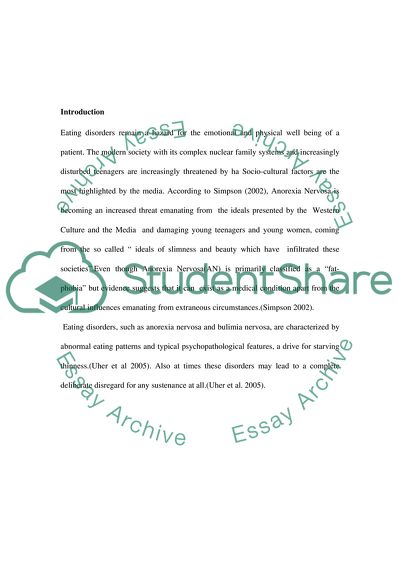Cite this document
(Implications of Socio-Cultural, Environmental and Biological Factors u Case Study, n.d.)
Implications of Socio-Cultural, Environmental and Biological Factors u Case Study. Retrieved from https://studentshare.org/health-sciences-medicine/1711063-etiology-of-eating-disorders-a-review-of-socio-cultural-biological-and-environmental-factors
Implications of Socio-Cultural, Environmental and Biological Factors u Case Study. Retrieved from https://studentshare.org/health-sciences-medicine/1711063-etiology-of-eating-disorders-a-review-of-socio-cultural-biological-and-environmental-factors
(Implications of Socio-Cultural, Environmental and Biological Factors U Case Study)
Implications of Socio-Cultural, Environmental and Biological Factors U Case Study. https://studentshare.org/health-sciences-medicine/1711063-etiology-of-eating-disorders-a-review-of-socio-cultural-biological-and-environmental-factors.
Implications of Socio-Cultural, Environmental and Biological Factors U Case Study. https://studentshare.org/health-sciences-medicine/1711063-etiology-of-eating-disorders-a-review-of-socio-cultural-biological-and-environmental-factors.
“Implications of Socio-Cultural, Environmental and Biological Factors U Case Study”. https://studentshare.org/health-sciences-medicine/1711063-etiology-of-eating-disorders-a-review-of-socio-cultural-biological-and-environmental-factors.


